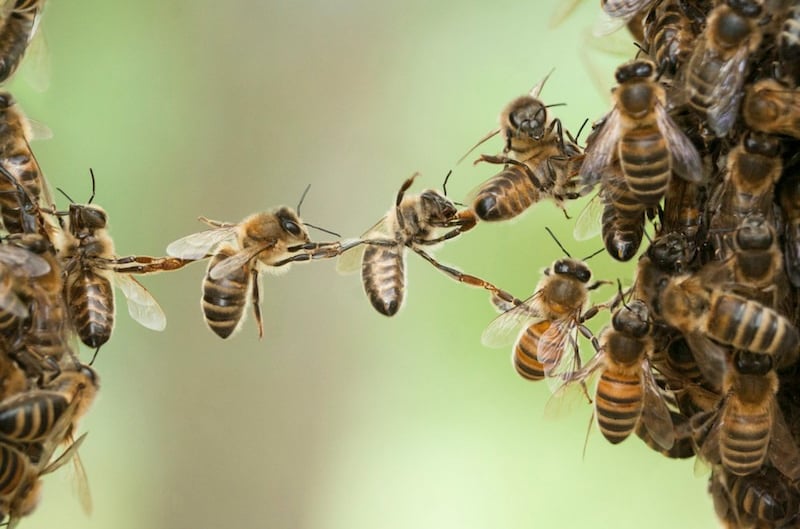The Vital Roles of Worker Bees in a Thriving Beehive
Discover the fascinating roles worker bees play within a beehive. From nurturing larvae to building honeycombs and collecting nectar, these industrious insects display incredible teamwork and division of labor, ensuring the survival and prosperity of the entire colony. Explore their diverse responsibilities, lifecycle, communication methods, and vital role in pollination and ecosystem balance.


Worker bees are the unsung heroes of the hive, playing essential roles in ensuring the colony's survival and prosperity. Despite their diminutive size, these industrious insects perform a variety of tasks that contribute to the well-being of the entire beehive. In this comprehensive guide, we'll explore the fascinating world of worker bees and their indispensable roles within the hive.
The Workforce of the Hive: Who are Worker Bees?
Worker bees, also known as sterile females, make up the largest population within a beehive. These bees are the offspring of the queen bee and unfertilized drone bees. Unlike the queen, who is solely responsible for reproduction, worker bees dedicate their lives to maintaining the hive and ensuring its smooth operation.
The Life Cycle of a Worker Bee
Worker bees undergo a remarkable transformation throughout their lifetime, and their roles within the hive evolve accordingly. Here's a brief overview of their life cycle:
Egg Stage
Larva Stage
Pupa Stage
Adult Stage
The Diverse Roles of Worker Bees
Worker bees are true multitaskers, taking on a variety of responsibilities crucial to the hive's well-being. Let's delve into their primary roles:
Nurse Bees: Caring for the Next Generation
Newly emerged worker bees assume the role of nurse bees, responsible for nurturing and tending to the developing larvae. They produce a special food called "royal jelly" from glands in their heads, which they feed to the larvae, including the potential new queen larvae.
House Bees: Maintaining the Hive's Integrity
As worker bees mature, they transition into house bees, tasked with maintaining the hive's cleanliness and structural integrity. Their duties include:
Cleaning and polishing the honeycomb cells
Removing debris and dead bees from the hive
Regulating temperature and humidity within the hive
Guarding the entrance to protect the colony
Wax Producers: Building and Repairing the Hive
Worker bees possess specialized glands that produce beeswax, a versatile substance used for constructing and repairing the intricate honeycomb structures within the hive. They use their mandibles to sculpt and shape the wax into hexagonal cells, creating the perfect environment for the queen to lay eggs and store honey and pollen.
Nectar Collectors and Honey Makers
Once worker bees reach their final stage, they become foragers, venturing out to collect nectar and pollen from flowers. These foragers play a crucial role in pollinating plants and ensuring the continuity of various ecosystems.
Upon returning to the hive, the foragers pass the collected nectar to house bees, who then ingest and regurgitate the nectar, transforming it into honey through a complex process involving enzymes and evaporation.
Undertakers: Maintaining Hive Hygiene
Worker bees also take on the somber role of undertakers, responsible for removing dead bees from the hive. This task is essential for maintaining the hive's cleanliness and preventing the spread of diseases.
Air Conditioning Crew: Regulating Hive Temperature
During hot summer days, worker bees work together to regulate the hive's temperature through a process called "fanning." They position themselves at the entrance of the hive and rapidly flap their wings, creating a cooling airflow that helps maintain the optimal temperature for the colony's well-being.
Guard Bees: Protecting the Hive
Certain worker bees serve as guards, vigilantly patrolling the entrance of the hive and defending it against potential threats, such as intruders or predators. These guard bees use their stingers to ward off any unwanted visitors, ensuring the safety of the colony.
The Remarkable Cooperation and Communication within the Hive
Worker bees exhibit remarkable cooperation and communication skills, enabling them to coordinate their efforts efficiently. They communicate through various means, including:
Waggle Dance: Forager bees perform this intricate dance to communicate the location and distance of valuable food sources to other worker bees.
Pheromones: Chemical signals released by bees to convey important messages, such as alerting the colony to potential threats or signaling the need for a new queen.
Trophallaxis: The exchange of food or other substances between bees, which plays a role in communication and social bonding.
The Significance of Worker Bees in Pollination and Ecosystem Balance
Beyond their roles within the hive, worker bees play a vital role in pollinating plants, contributing significantly to the maintenance of biodiversity and ecosystem balance. As they forage for nectar and pollen, worker bees inadvertently transfer pollen from one plant to another, facilitating cross-pollination and ensuring the successful reproduction of countless plant species.
The remarkable teamwork and division of labor exhibited by worker bees are truly awe-inspiring. Their collective efforts ensure the survival and prosperity of the entire colony, making them indispensable members of the beehive community.
Conclusion
worker bees are the backbone of the hive, performing a multitude of essential tasks that contribute to the well-being of the colony. From nurturing the next generation to collecting nectar, producing wax, and maintaining the hive's integrity, these tiny insects display an extraordinary level of cooperation, communication, and dedication. By understanding and appreciating the vital roles of worker bees, we can gain a deeper appreciation for the intricate web of life and the invaluable contributions of these unsung heroes to our ecosystems.


